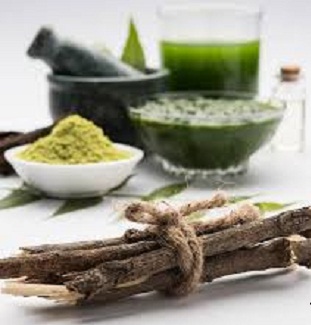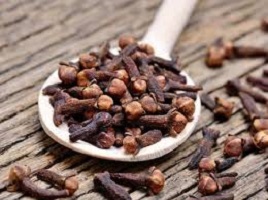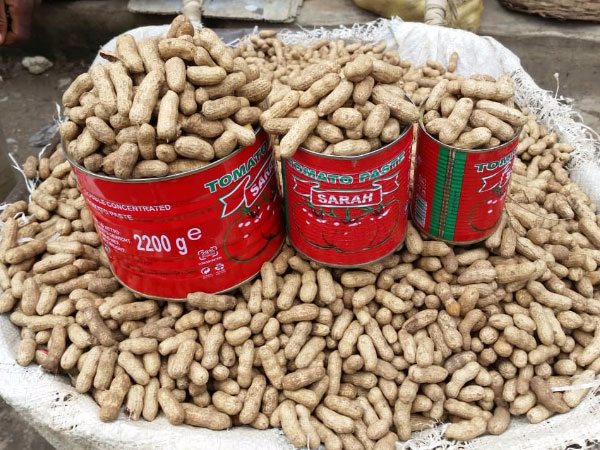Neem / Dogonyaro: A Tree for Solving Universal Complications
Please Watch for a clearer picture of the topic Neem >>>
Neem is a natural herb that comes from the Neem tree. The leaves from the tree, the bark, and seeds are used to make medicine.
While the root, flower, and fruit are less frequently used.
In some parts of India, the soft new leaves of the Neem tree are consumed at daybreak on an empty stomach, in the month of Chaitra as per the Hindu calendar, which corresponds with April
And it is believed to keep your body free from ailments throughout the year.
Where to Find Neem Leaves
Though, the exact origin is unclear: some say Neem is native to the whole Indian subcontinent.
Others attribute the origin to dry forest areas throughout all of South and Southeast Asia, including Pakistan, Sri Lanka, Thailand, Malaysia, and Indonesia.
But, it is in India that the tree is most widely used.
The health benefits of the Neem trees are good examples of how nature helps with both the problem and the cure.
Botanically known as Azadirachta indica (Meliaceae) or ‘Neemba’ in Sanskrit, the Neem tree also has English names which include: Bead Tree, Holy Tree, Huile de Neem, Indian Lilac, Indian Neem.
Other Lilas des Indes, Lilas de Perse, Margosa, Margosa Tree, Margousier, Margousier à Feuilles de Frêne, Margousier d’Inde, Melia azadirachta, Neem Oil, Neem Tree, Melia azadirachta, Nim, Nimb, Nimba, Persian Lilac, Pride of China.
In Nigeria, the Neem tree is commonly known as the Dogonyaro tree. It is a popular and tall medicinal plant.
Tall people are jokingly called ‘dogo’ about the dogonyaro tree.
As a little child, I was drawn to the Dogonyaro tree that grows wildly down our street.
I liked the small yellowish fruit which looks like tiny apricots and the busy branches with their saw-like leaves.
The Ibo tribe of the Eastern part of Nigeria boil the dogonyaro leaves with pawpaw (Carica papaya) leaves together for treating malaria.
They believe that the juice has a high rate of curing malaria.
They also cut the branches and use the stick instead of toothbrushes to clean their teeth every morning and evening.
But this can cause illness; Neem twigs (dogonyaro branches) are often contaminated with fungi within 2 weeks of harvest and should be avoided.
Like all other parents in our part of town then, my mother held on so much to the efficacy of this very bitter juice.
Back then, treating malaria with dogonyaro was not only cheaper but also quicker since the tree leaves are readily available.
Whenever any of us were down with malaria or feeling feverish, she will treat us with dogonyaro juice or a steam bath with the boiled Dogo Yaro leaves in the water.
How to Make Neem Juice /Tea
Neem Juice is made from Neem leaves and water, so it’s 100% pure.
- Firstly, combine the organic Neem leaves and 1 cup of water in a mixer and blend it till smooth.
- Then, strain the mixture using a strainer in a deep bowl.
- Lastly, serve the neem juice immediately.
Dosage
One recommendation is to take one tablespoon (5 ml) of neem leaf juice daily on an empty stomach each morning for three months.
An alternative is to chew or take in powder from ten (10) neem leaves daily in the morning
Neem leaf Benefits
The leaf has many uses which include: leprosy
- Eye disorders
- Loss of appetite
- Skin ulcers
- For vitiligo
- Bloody nose
- Intestinal worms
- Stomach upset,
- Diseases of the heart and blood vessels (cardiovascular disease)
- Fever
- Diabetes
- Gum disease (gingivitis) and liver problems.
Neem Leaves Nutrition Facts
The constituent of the leaves includes protein (7.1%), carbohydrates (22.9%), minerals, calcium, phosphorus, vitamin C, carotene, etc.
They also contain glutamic acid, tyrosine, aspartic acid, alanine, praline, glutamine, and cystine-like amino acids, and several fatty acids (dodecanoic, tetradecanoic, elcosanic, etc.)
The bark is for the treatment of skin diseases, malaria, stomach, and intestinal ulcers, and fever.
The flower helps to control phlegm, reduce bile, and treat intestinal worms.
The juice boosts metabolism and aids in weight loss. It controls blood sugar levels when taken in moderation by diabetics.
The fruit acids in the treatment of hemorrhoids, urinary tract disorders, intestinal worms, phlegm, eye disorders, wounds, diabetes, and leprosy.
The leaves are good for asthma, cough, hemorrhoids, urinary disorders, low sperm levels, intestinal worms, and diabetes.
The seed and seed oil aid in the treatment of leprosy and intestinal worms. They are also used for birth control and to cause abortions.
The stem, root bark, and fruit are used as an astringent and a tonic.
When used as hair oil – Neem promotes shiny, healthy hair, combats dryness, treats head lice, prevents premature graying, and may even help with some forms of hair loss.
When applied directly to the skin, it helps to treat skin diseases, wounds, and skin ulcers; as a mosquito repellent; and as a skin softener.
Dogonyaro can be used as a vaginal suppository to avoid and control the spread of sexually transmitted infections.
Dogonyaro leaves extracts to contain antiviral properties that destroy viruses as well as prevent them from growing and spreading to other parts of the body.
Neem is also used as an insecticide.
Benefits of Neem for Animals
Wash your dog with Neem soap or shampoo to avoid biting insects, ringworm, mange mites, ticks and fleas, any skin disorders, or fungal infection.
Neem is just as good for the skin and hair of your pets as it is for you.
Gardeners and Farmers
Neem spray is a popular insect spray. However, one of the most valued benefits of the spray in the garden is that it is non-toxic to us, to other mammals, birds, bees, and even to beneficial insects.
Side Effects: Are There Safety Concerns?
Neem is maybe safe for most adults when taken by mouth for up to ten weeks.
However, when taken in large doses or for long periods, it is possibly unsafe. It might harm the kidneys and liver.
Special Precautions & Warnings
Pregnancy and breastfeeding: The bark and oil are likely unsafe when you consume by mouth during pregnancy, they can cause a miscarriage.
Therefore, stay on the safe side and avoid use during breastfeeding.
Summary
With an enriched medicinal history that is 5000 years old, today dogonyaro is one of the most latent home remedies for all sorts of health issues.
Lastly, this green plant every part is beneficial for the human body and can help you to achieve a healthy lifestyle.
Fresh Neem Leaves near Me: Where to Buy
Easily accessible in Nigeria if not am sure you can get it online at Amazon or Walmart.




Pingback: Camwood Powder Benefits for skin: How to use - 9jafoods